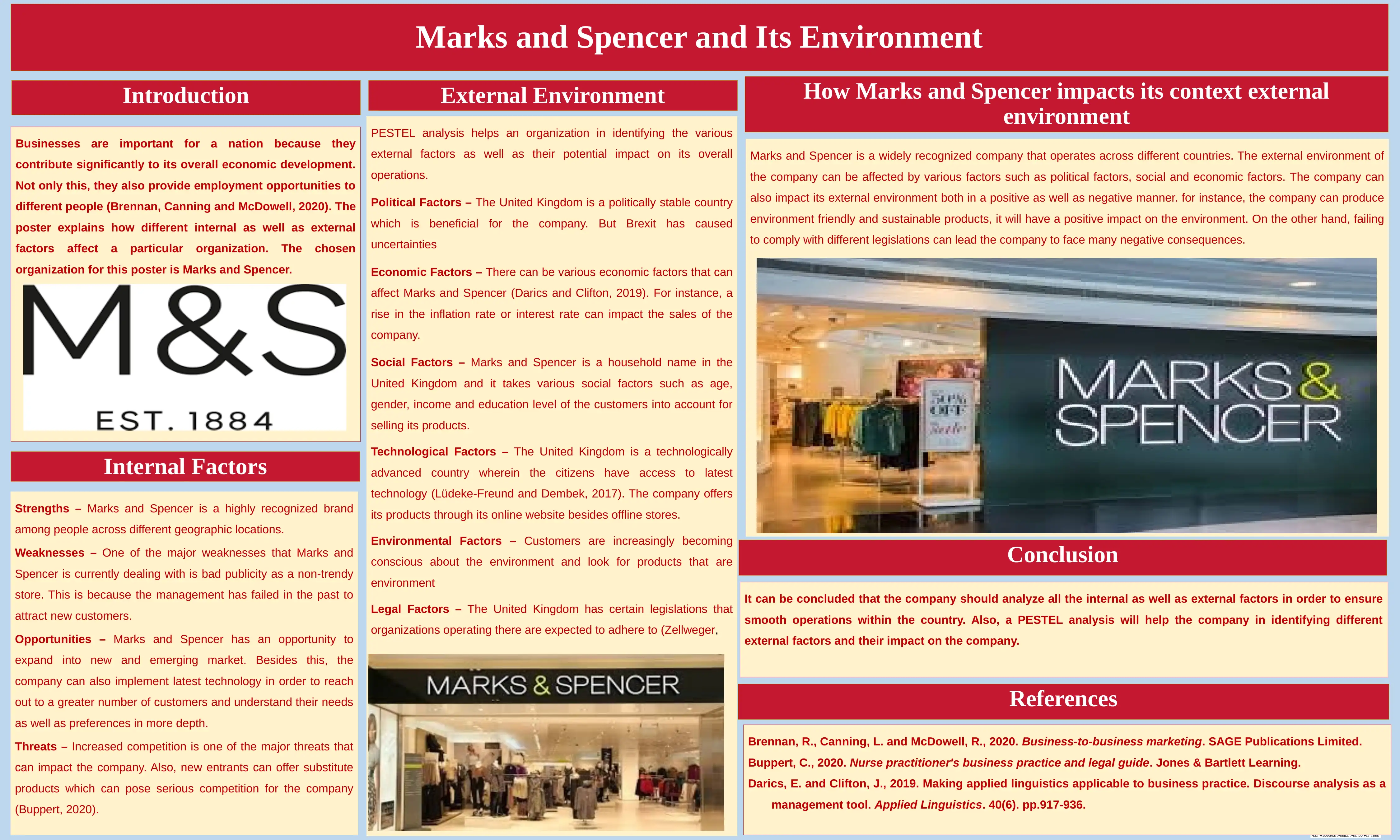Report on the External and Internal Environment of Marks and Spencer
VerifiedAdded on 2022/12/29
|1
|658
|90
Report
AI Summary
This report provides an analysis of Marks and Spencer's business environment, focusing on both internal and external factors. It employs a PESTEL analysis to examine the political, economic, social, technological, environmental, and legal factors impacting the company. The report explores the company's strengths, weaknesses, opportunities, and threats (SWOT). It discusses the impact of various factors, such as political stability and economic conditions, on Marks and Spencer's operations. It highlights the importance of adapting to technological advancements and the growing environmental consciousness of consumers. The report concludes by emphasizing the need for continuous analysis of both internal and external environments to ensure the company's successful operations. The report also includes references to support the analysis.







![[object Object]](/_next/static/media/star-bottom.7253800d.svg)